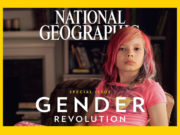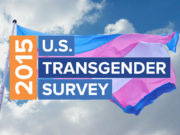Adults who identify as transgender are more racially and ethnically diverse than the general U.S. population, according to a new study by UCLA.
Published in October by the Williams Institute at the UCLA School of Law, the findings represent the first ever estimates of the racial and ethnic make-up of adults who identify as transgender in each of the 50 states, plus the District of Columbia.
The study also concluded that adults living in the United States who identified as African-American, Latino, or “of another race or ethnicity” * are more likely than those who identify as white to also identify as transgender.

Dr. Jody L. Herman, one of the study’s three authors, explained: “We have suspected from prior research with smaller representative samples that people who identify as transgender are more racially and ethnically diverse than the U.S. population. Data we now have from more state-level surveys are confirming that suspicion.”
At present, in the United States, an estimated 0.8 percent of African-American, 0.8 percent of Latino, and 0.6 percent of adults of another race or ethnicity identify as transgender. Those numbers show that people identifying as white are least likely to also identify as transgender, an estimated 0.5 percent.

The results of the study will hopefully bring attention to the ongoing under-representation of diversity in the transgender community.
Media representation of transgender people has largely ignored transgender diversity. The recent wave of movies, TV shows and documentaries with transgender characters has been largely an extension of business as usual in the media, with regards to race and ethnicity. The majority of media attention continues to be around white protagonists. The absence of trans men in the media is also shockingly disproportionate.
The need for greater diversity is not just pertinent to social exposure. It is critical in addressing the safety and social issues which impact transgender people of color most.
A 2015 report by the National Center for Transgender Equality, showed that while all transgender people are at a higher health and security risk than the general U.S. population, people of color were the most likely to be victims of widespread discrimination and inequities. In fact, in 2013, more than half of all LGBT homicide victims were transgender women of color.
Despite the invaluable data the UCLA report has provided, the authors caution that there remains a lack of nationally-representative data sources to properly measure the transgender population. The authors suggest that, in the future, “nationally-representative surveys should include questions to identify transgender people, which would provide new opportunities to further our knowledge about the demographic composition of the transgender population.”
The population of transgender people in the United States has been growing exponentially in recent years. From 2011 to 2016, the population soared from 700,000 to 1.4 million, according to studies also conducted by the Willaims Institute. Greater exposure and changing social attitudes towards transgender people has contributed, in part, to allowing many to come out and assume their true identity.
Notes:
* The study notes that: “due to sample size limitations, several groups are combined in the “Other Race or Ethnicity, non-Hispanic” category, including people who are Asian or Pacific Islander, American Indian or Alaska Native, biracial or multiracial, and other racial and ethnic groups.”
































